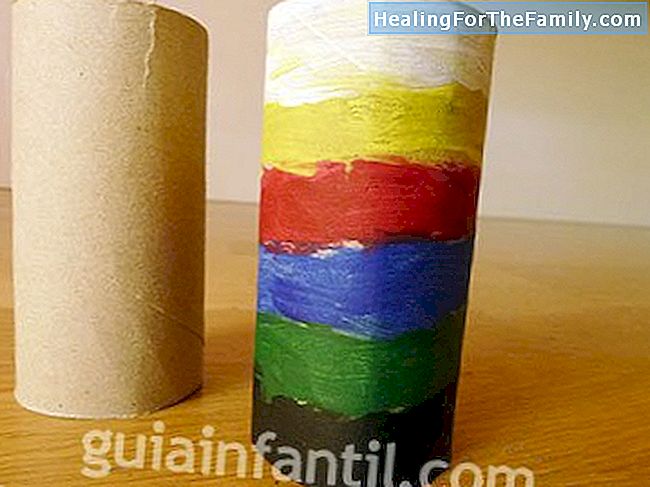Table of Content
Moreover, these telescopes are made of glass and use glass lenses and mirrors, which gather light in the form of visible, infrared, and electromagnetic radiation. Simply put, radio telescopes are specifically designed to undertake the reception of radio waves coming from outer space. It is possible to utilize them to send and reflect radio waves off of the planets and moons in our solar system as well.

You have just built a simplified version of a refractor telescope. The lenses at each end work together to focus on a distant object and magnify it so that your eye can see it better. The lens on the outside tube is called the objective lens. This lens collects light from whatever you point the telescope at. The lens at the other end of the telescope is called the eyepiece lens. To make a telescope, start by wrapping a piece of 24 inch long corrugated paper around the diameter of a magnifying glass lens.
What is the difference between spherical and parabolic mirrors?
Try not to get any hot glue on your lens- you want it to be the clearest it can be. This is optional, but if you have the proper tools, carefully saw off the handles from both lenses with a handsaw and smoothen the spot out. Since I don't have a saw, I didn't cut off the handles from mine, so I went straight to the next steps and attached them.

You may have some of the building materials already on hand that will bring the price well under $200 for powerful homemade telescope. Portable and easy to build, these detailed instructions will show you how to build a telescope that will provide a bird’s eye view of the stars from your own backyard. Use these easy to follow plans to build a telescope that will enable you to see the world from your own backyard. This cheap DIY telescope will provide a view of the solar system that is grand enough to capture their imagination and fans the flames of their natural curiosity. Inspire a future astronomer and DIY builder with just a small investment of time and money on this DIY project. Utilize your creativity and construct your own telescope to see nighttime phenomena such as birds, trees, and even stars in the sky.
Why are Dobsonian Telescopes a Favorite among Amateur Astronomers?
Get your sheet of a printed paper and two magnifying glasses. This is not like the optical telescope which usually produces images that have a patch of the sky and observed like a patchy image. The traditional radio telescope works with a different method. It contains a single receiver and records a single time-varying- signal characteristics from the observed design. A single dish contains an array of several receivers; this is known as a focal-plane array. If the aperture is large the collected light will be greater and the object will be brighter.

This is especially important to note if your purpose is to magnify the things. The greater the aperture, the brighter the view will be, and the more magnification can be employed. One of the interesting facts about the telescope is that it works with magnification. You make things dimmer when you magnify the objects. When you deal with bright objects, which have greater light, can be easily seen.
How do you make a telescope out of toilet paper rolls?
You will need to measure about 1 1/2 inches from the mark. This will create the extra length to glue around the magnifying glass. To determine this, you’ll need the focal length of the eyepiece and focal length of the lens.The magnification is the FL of the lens divided by the focal lengths of the eyepiece. In general, the maximum magnification of a telescope is 50 times the size of the aperture. This is due to the fact that small structures can be built with greater precision than larger structures, and therefore are smaller.
If you want a better view of birds, trees, or even the night sky, you and your family may construct a small telescope together using inexpensive materials. Although they may have the same principle of operation, radio telescopes are not the same as optical telescopes. WikiHow is a “wiki,” similar to Wikipedia, which means that many of our articles are co-written by multiple authors. To create this article, 37 people, some anonymous, worked to edit and improve it over time. Wrap the paper around one of the magnifying glasses.
DIY Astronomy Project
Radio telescopes are designed to receive electromagnetic radiations from outer space. These earth-borne interference remain a significant part of the challenge that has limited the study of radio waves from outer space. In that case, before you can get a clear signal, your radio telescope must have a large collecting area. Undoubtedly, optical telescopes have become cheaper in recent years, so cheap that it might not make sense for you to attempt to build one yourself.
Roll the sheet of paper or cardstock up the long way to produce a tube that is approximately the same diameter as the lens with the shortest focal length. Attach the second lens to the end of the paper towel tube with a clean line of tape. Look through the eyepiece of your telescope and direct the opposite end of the telescope at a faraway object. The spacer will need to lie flat on the inside of the outer tube to hold the concave-convex lens in place. You'll need to drill the holes and put the glue in like you did with the eyepiece.
This type of telescope is really good for viewing the moon. The images will be upside down, since astronomers don't care about up and down in space . If you wish to align the image with gravity, you can use two prisms aligned in an "N" shape to correct the image, but you will have to re-position the lenses. This Kepler design is a tried and true design that will provide a clear image with a simple, stream-lined build.

If you look back in the 20th century you’ll see many of the telescopes were discovered at that time. Roll up the sheet of paper or cardstock the long way to form a tube that is about the diameter of the lens with the shortest focal length. Tape the edges of the eyepiece lens to one end of the tube as neatly as possible. Your telescope is a "refracting telescope," because it uses lenses to help gather more light than your eye could possibly do on its own. The scope uses two lenses to bend light, which makes an object appear closer than it really is.
To get a sharp focus on the print you need to move the second glass forward or backward. This will increase the focus and make it sharp and clear. You will see that the object has the larger and the brighter object.
You can use this as a finder scope on a bigger telescope too . Wrap one edge of the cut side slightly over the other edge and hold it in place with one hand. Get crafty and build your own telescope to look for birds, treetops, and even stars in the night sky. Connect everything that needs to be connected and have your radio telescope set up today! This post has outlined all the items that are required to make a DIY radio telescope. The steps you should follow have been equally explained.
Why do radio telescopes have poor resolving power?
Because radio waves have a large wavelength, they have weak resolving power when used in radio telescope. The wavelength of radio waves is sometimes thousands of times longer than the wavelength of light. The light-gathering power of the telescope depends on its aperture.

The tube inside should be nice and snug in there, but should slide out and in smoothly. Cardboard tube (ex. from kitchen wrap or aluminum foil). Make sure it's about the size of your big glass's lens, so it'll fit. This is pretty fun for for backyard use, like looking at the stars or moon from far away, or even just read off your friend's computer from a distance. Then, I had a EUREKA moment and brought a couple cardboard tubes that were lying around and got to work. This is relatively inexpensive than the other telescopes.

No comments:
Post a Comment